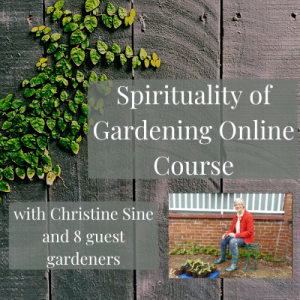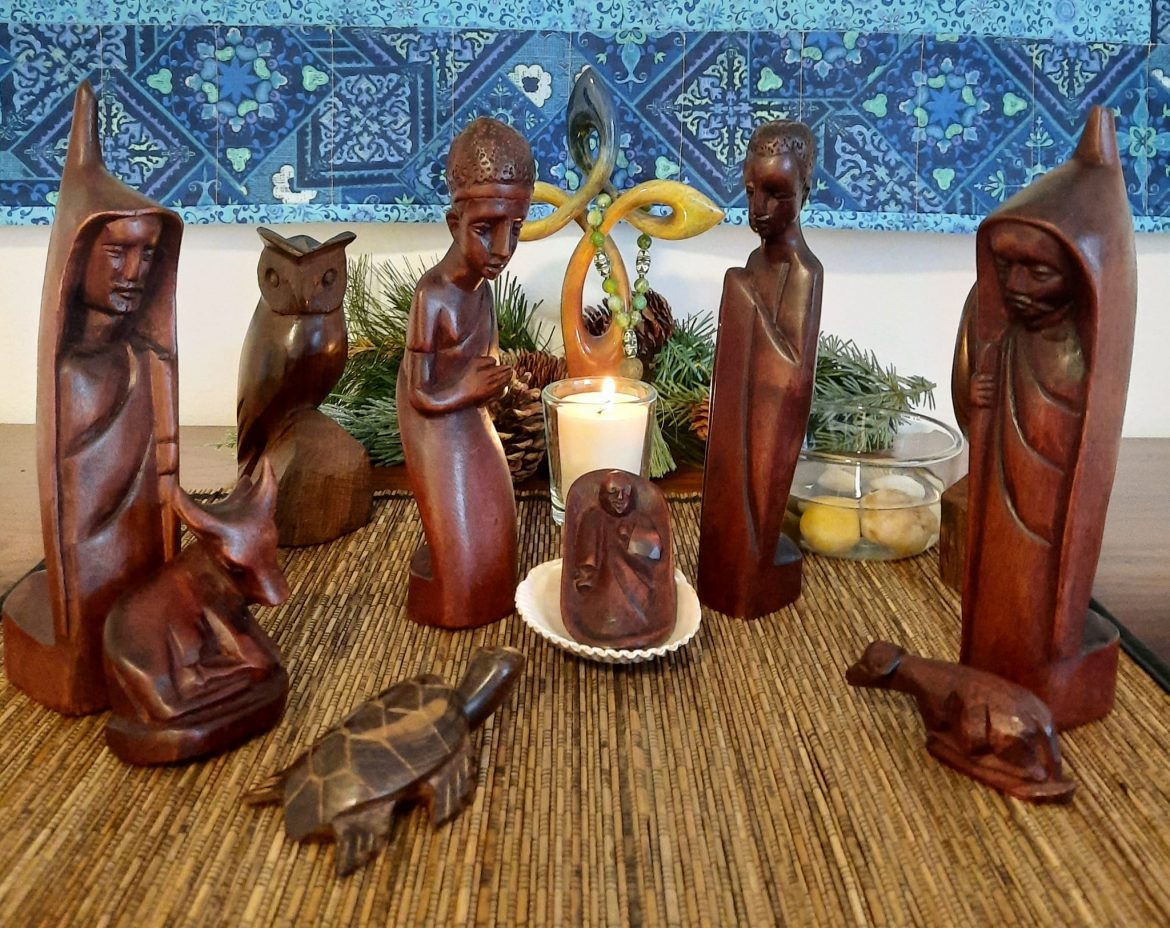Of all the customs and traditions of Christmas, the creche or nativity set is my favorite. As a child, I remember my parents would have us slowly create the scene during the season of Advent. First, we would set up the stable, and then over time, my brothers and I added a cow, a sheep and shepherd, and then an angel. The last week of Advent, Mary and Joseph would take their places. The Three Kings were set up somewhere else in the house as they made their slow and solemn journey to Bethlehem. On Christmas Eve, a votive candle would be lit and placed in the scene, symbolizing Christ’s divinity. And then, finally on Christmas Day, the baby Jesus would make his entrance, lying in the manger at the center of it all.
We were enacting that the Incarnation, God-with-us, entered into life in a very concrete and material way. As the Gospel of John writes, “And the Word became flesh and dwelt among us.” (John 1:14) Or, in Eugene Peterson’s paraphrase, “God put on flesh and blood and moved into our neighborhood.” (The Message) That is a picture of a God who wants to get close to us. Think of God moving in as your next-door neighbor!
In fact, God is revealed in our neighborhoods and in our homes, in one another and in creation. Celtic Christian imagination brings this point home, literally. It has been said that the genius of Celtic spirituality is its ability to fuse together the unique time and place of Christ’s birth in Bethlehem with our own specific present. It teaches us that Bethlehem can become present wherever we are. (Ray Simpson, A Holy Island Prayer Book)
To illustrate that point, Patrick Thomas, a Welsh author and an Anglican priest, has written that in Welsh nativity scenes of the 19th and 18th centuries, whether it is a painting or a figurine set; a washerwoman, or laundress accompanies Mary, Joseph and Jesus at the manger. What a wonderful and beautiful thought, that God so loved the Holy Family that someone was sent to do the laundry!
On a more serious note, for the Welsh, God enters into the timeless story of the Holy Family by introducing a contemporary figure that they would recognize from their own culture–a working-class woman. It is interesting because a working-class woman of that period had about the same status as the shepherds did in Biblical times. One might romanticize shepherds but not working-class women. The Welsh people really understood who it was the Christ came for –the poor among their own communities.
I love the Celtic understanding that there need not be a division nor a separation between the rich and poor, the divine and human, the spiritual and material, the sacred and ordinary, the real and imagined, this time and former times. To illustrate the last point, in the Irish tradition, there is a tradition that St. Brigid accompanied the Holy Family as the midwife, never mind the degrees of centuries separation!
Intrigued by the Welsh tradition of bringing our lives into the nativity story, I engage in sacred play as part of my prayer. Over the years I have had a variety of nativity sets and I tend to favor indigenous ones. One of my favorite sets that I will use this year is from Africa. As I contemplated on how Christ is being born in my life this holy season, images of creation “danced in my head.” During the pandemic, I learned to pray and worship outdoors. I am grateful for my prayer time in nature.
This year, my nativity scene will include not only the Celtic expression of the elements of earth, air, wind, and fire; but it will also include more friends of the animal kingdom. In addition to the donkey and sheep, as I placed my turtle, my quail and my owl in the scene, I also gave thanks for St. Francis. He of course created the first living creche by bringing in sheep, a donkey and a real live baby into a church on Christmas Eve, centuries ago. St. Francis and many of the Celtic saints would appreciate a more inclusive representation of the animals at any manger scene, I am sure. And as an aside, in the movie, “Love Actually” a school Christmas pageant in England included two lobsters at the birth of Jesus! That feels like the Celtic imagination and inspiration jumping into the culture of our day. And it is good! It is another indication that Christ was born for all.
That a laundress accompanies the Holy Family in Welsh art means that the Holy Family and Christ accompanies us in all our life tasks as well. So, I wonder, how is Christ being born in your life or in your children’s and grandchildren’s lives? Who might stand with the Christ child and stand in for you at the manger this Christmas season? Might you find a creative way to illustrate that reality in your home so that your household nativity scene reflects your understanding of how God is among us now?
Perhaps, imagining being at the birth of Christ with the help of this meditation will spark your creativity:
“I open the stable door. I kneel before the infant. I worship with the shepherds. I adore the Christ child. I give my love with Mary and Joseph. I wonder at the Word made flesh. I absorb the love of God. I sing glory with the angels. I offer my gifts with the wise men; I have come from a land afar. I receive the living Christ. I hold Him in my hands. I go on my way rejoicing, glorifying and praising God.” (David Adam, The Open Gate)
For to us a Child is born. Let us rejoice and give thanks for the many ways that Christ is born again in our lives!
As an Amazon Associate I receive a small amount for purchases made through appropriate links. Thank you for supporting Godspace in this way.
 “Anyone who thinks that gardening begins in the spring and ends in the fall is missing the best part of the whole year; for gardening begins in January with the dream” – Josephine Neuse.
“Anyone who thinks that gardening begins in the spring and ends in the fall is missing the best part of the whole year; for gardening begins in January with the dream” – Josephine Neuse.
Explore the wonderful ways that God and God’s story are revealed through the rhythms of planting, growing, and harvesting. Spiritual insights, practical advice for organic backyard gardeners, and time for reflection will enrich and deepen faith–sign up for 180 days of access to work at your own pace and get ready for your gardening season. Or, give as a gift to a gardener in your life–see the course description for how!

